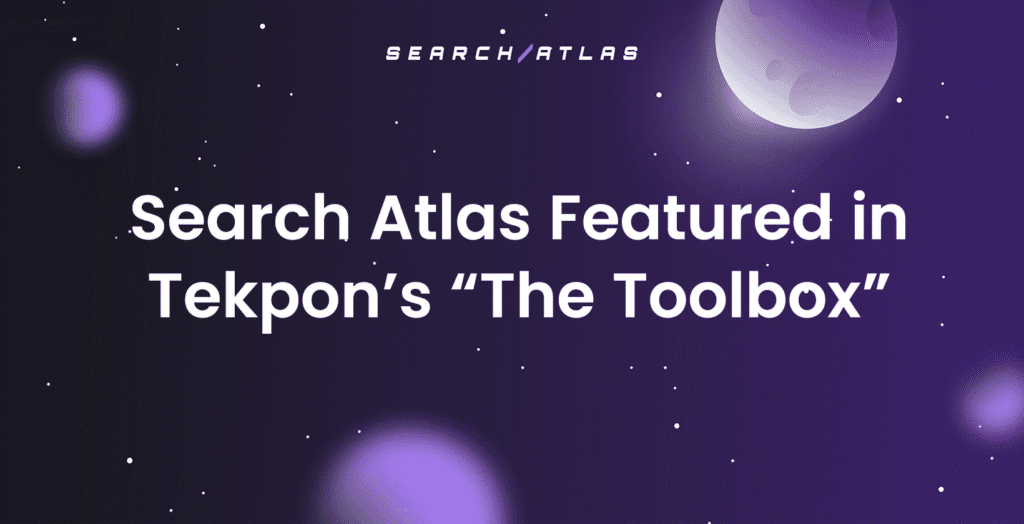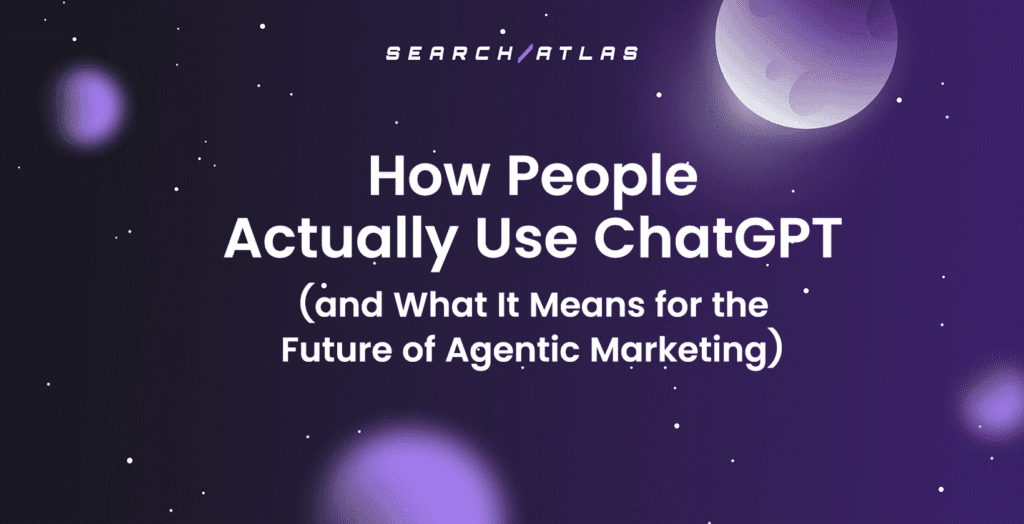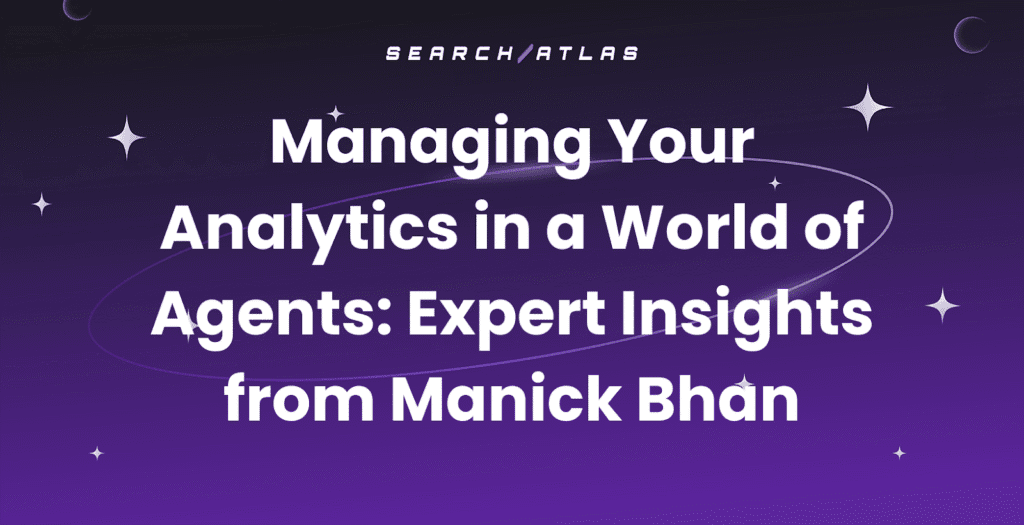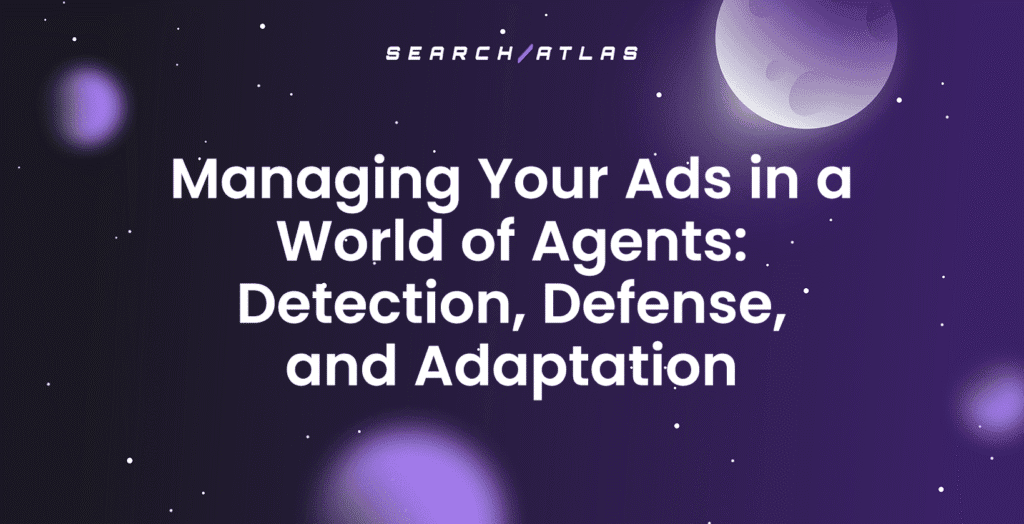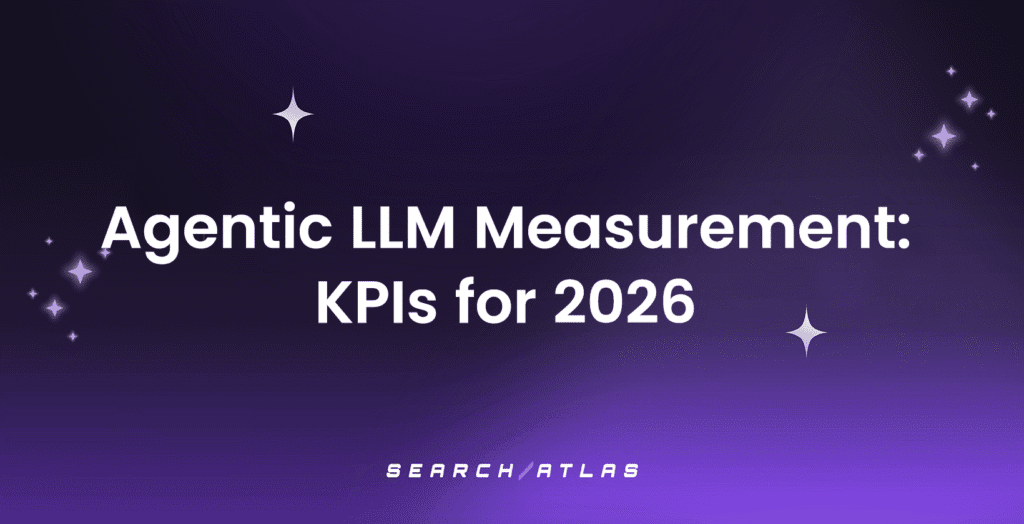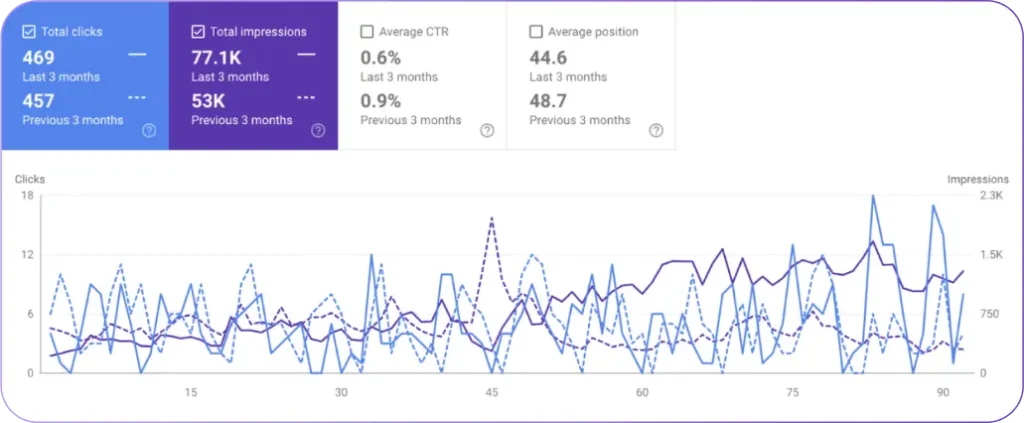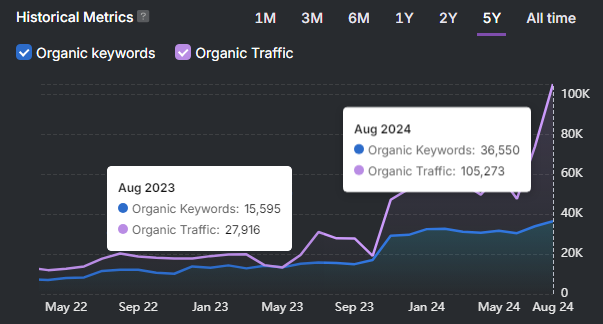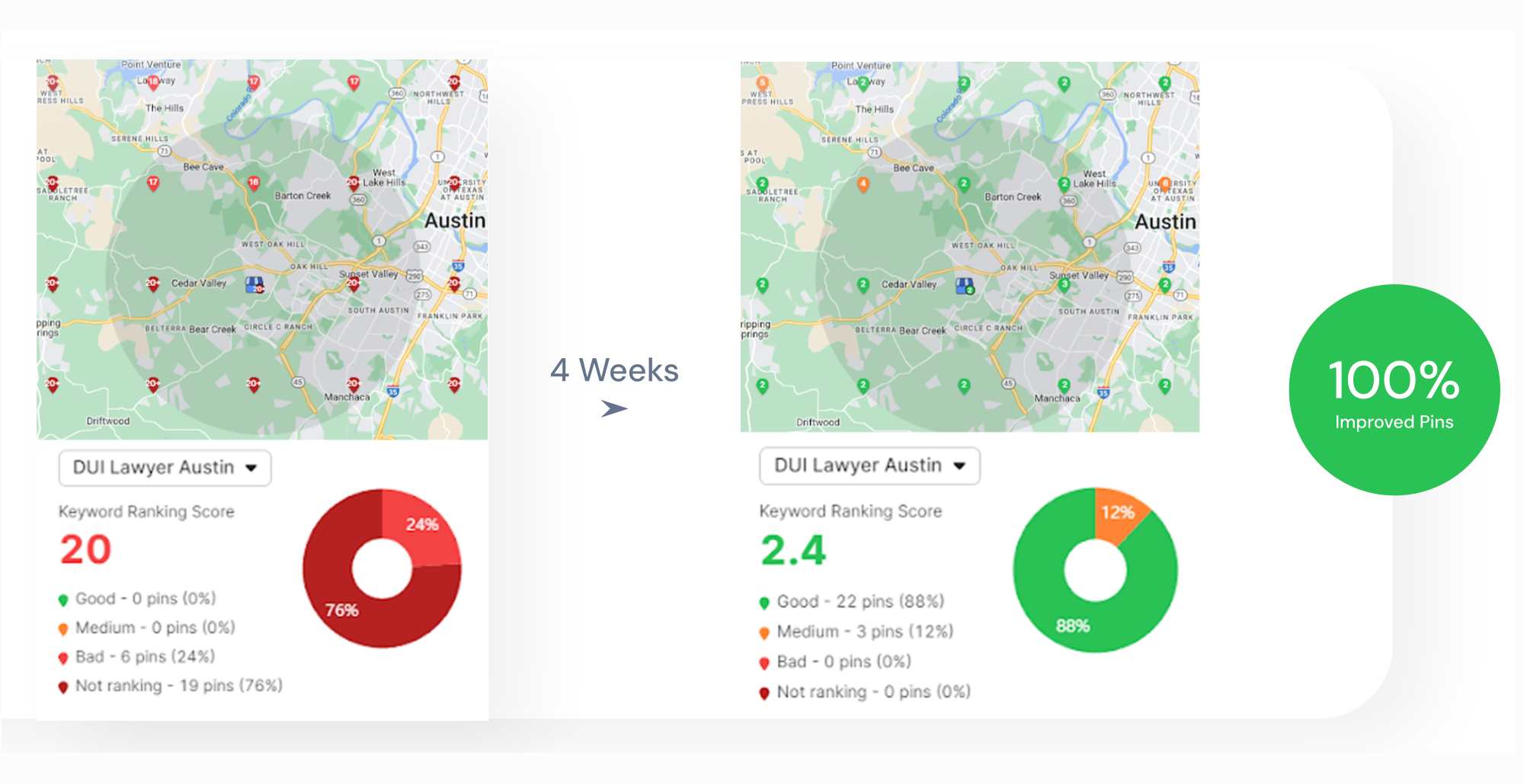On June 30, Google began rolling out the June 2025 Core Update, and the process is expected to take up to about three weeks to fully complete.
This means the search results may fluctuate throughout early-to-mid July as the update progresses. The key is not to panic.
What Is this Update Targeting?
Unlike more targeted updates (for example, spam or product review updates), a broad core update involves wide-ranging changes to Google’s ranking system.
Websites in any vertical (from local service sites to nationwide businesses, eCommerce, or SaaS) could see changes in their Google search rankings as the algorithm recalibrates what it considers most relevant and trustworthy for users.
What Are the Probable Changes?
Google’s ongoing focus on content quality and relevance.
Past core updates have often rewarded sites with strong E-E-A-T, while sites with thin or less reliable content might lose visibility.
Google typically doesn’t disclose specific criteria changes, but the broad nature of core updates means any aspect of your site’s content and overall quality profile is in scope.
Early chatter in the SEO community (as on July 2) indicated that ranking fluctuations had just begun to materialize. 👀
Google advises against making major alterations to your site while the update is still in progress.

But it’s wise to keep an eye on your key SEO metrics during this period.
What to Watch For While Monitoring the Impact?
When any core update hits, you should closely monitor your sites’ performance data:
Ranking fluctuations
Track your important keywords weekly. Sudden drops or jumps for multiple keywords can signal that your site was impacted. Remember that volatility is normal during a rollout.

Organic Traffic Patterns
Check your website analytics for unusual changes in organic search traffic. A noticeable dip in Google traffic (or a surge) starting around the end of June could be attributable to the core update. Compare week-over-week and year-over-year trends to filter out seasonal effects.

Competitor and Industry Trends
See if the changes are happening just to you or more broadly.
Join Search Atlas SEO Theory Community to talk to other SEO professionals in your niche or use Search Atlas Site Explorer to analyze your market.
If multiple sites in your sector saw similar drops or gains, it might reveal a pattern.
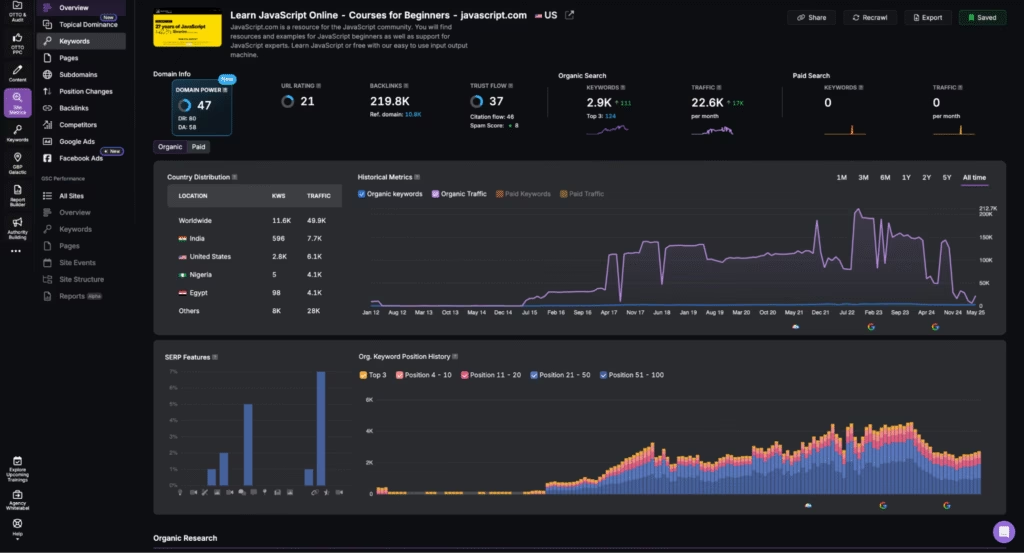
Patience is hard when rankings swing, but it’s necessary: Reacting too quickly could backfire if those rankings would have come back anyway.
Can Brands Bounce Back After a Core Update?
Being hit by a core update now does not mean your site is doomed.
There are plenty of cases where websites saw a dip in one update and came back stronger in a later update.
Here are some examples.
ECommerce Lost 50% of Its Traffic in December 2024 Core Update
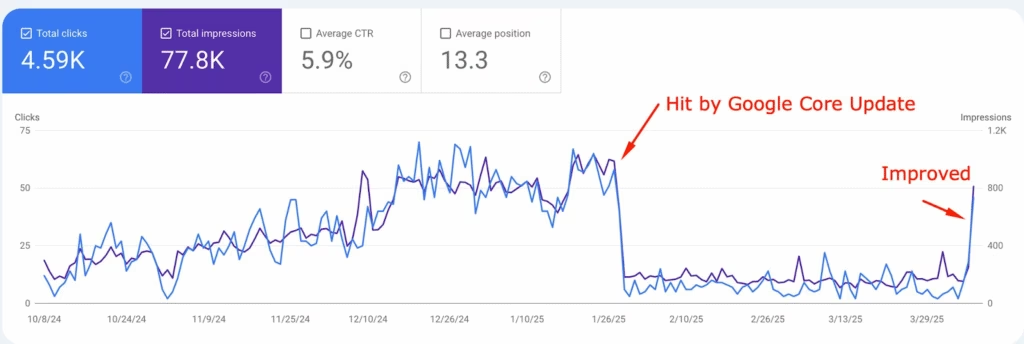
An eCommerce site lost 40 to 50% of organic traffic during Google’s December 2024 core update and a follow-up spam update one week later.
The team rewrote over 200 product pages, improved metadata, cleaned up internal linking, and increased page speed. Within two weeks, traffic returned to pre-update levels, and key rankings improved by 30 to 40%.
SaaS Company Lost 80% of Its Traffic In April 2024 Core Update

A SaaS company in the interior design space reported an 80% traffic loss during the March 2024 core update (which began on March 5 and concluded on April 19). They had no spam or extensive content strategies.
Their rankings fully recovered by mid-year without drastic changes. Not all recoveries require overhauls. Sometimes, Google’s algorithm simply readjusts.
How to Stay Prepared for Future Updates?
The most effective strategy for SEO professionals is to adopt a holistic, long-term approach, and that’s where Manick Bhan’s Holistic SEO or XACT Framework methodology stands out.
Rather than chasing short-term ranking tricks, it focuses on the four core pillars Google consistently rewards to build algorithm-resilient websites:
- Authority: Building high-quality, relevant backlinks and cultivating brand trust signals.
- Content: Creating helpful, original, and comprehensive content that aligns with search intent.
- Technical: Ensuring crawlability, speed, mobile-friendliness, and structural integrity.
- Experience: Enhancing UX through intuitive navigation, accessibility, and trust-building design elements.
Websites aligned with Manick’s framework tend to experience less volatility during core updates. When they are impacted, they often recover faster due to a solid SEO foundation.

OTTO SEO, the first AI SEO agent, automates the Holistic SEO framework and adapts to every Google core update through its Dynamic SEO system.
OTTO continuously analyzes real-time SERP data to detect algorithm shifts and applies updates (across content, technicals, internal linking, and more) based on what’s working post-update.See how your site measures up by reviewing all 250 SEO Ranking Factors Google Uses to Rank Results in 2025!


